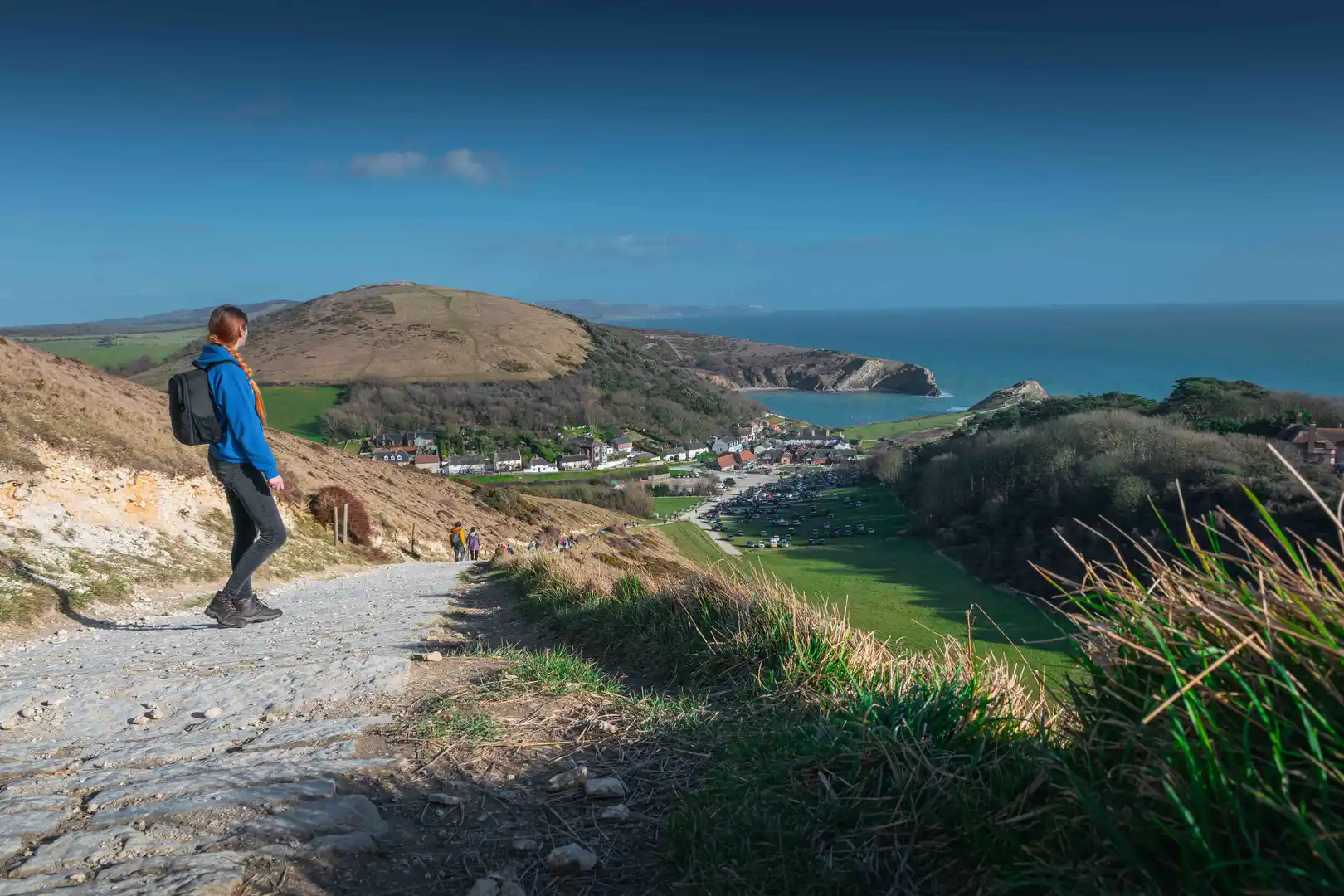

The Dorset section of the South West Coast Path runs from Exmouth to Poole Harbour, around 95 miles of dramatic cliffs, sweeping pebble beaches, and world-famous geology. This is the final stretch of England’s longest National Trail, and it offers one of the most scenic walking holidays and outdoor adventures in the country.
Here, the path follows the Jurassic Coast UNESCO World Heritage Site, where 185 million years of Earth’s history are revealed in fossil-rich cliffs and striking rock formations like Durdle Door and Old Harry Rocks. Walkers encounter everything from the vast sweep of Chesil Beach to picturesque harbours like Lyme Regis, Weymouth, and Swanage.
The terrain is varied — with steady climbs over chalk headlands, easy promenades along seaside towns, and dramatic cliff paths where the Dorset coast meets the English Channel. Whether you walk the full stretch or dip into day walks, this section combines natural wonder, seaside culture, and world-class coastal scenery.
The trail leaves Exmouth, crossing red sandstone cliffs into East Devon’s Jurassic Coast. Highlights include the fossil-rich cliffs near Sidmouth and Seaton, finishing in Lyme Regis, famous for fossil hunting and maritime charm.
This stretch takes in Golden Cap, the highest point on the south coast of England, with wide views across Lyme Bay. The route continues past the village of Abbotsbury before reaching Weymouth, a lively seaside town.
A dramatic stretch of coast, with the vast sweep of Chesil Beach, the Isle of Portland, and the world-famous rock arch of Durdle Door near Lulworth Cove.
Here, the path climbs over chalk cliffs and rolling downs, with highlights including Worbarrow Bay and St Aldhelm’s Head before reaching Swanage on the Isle of Purbeck.
The final stage includes the iconic Old Harry Rocks before the path descends into Studland Bay and the finish at Poole Harbour — the official end of the 630-mile South West Coast Path.